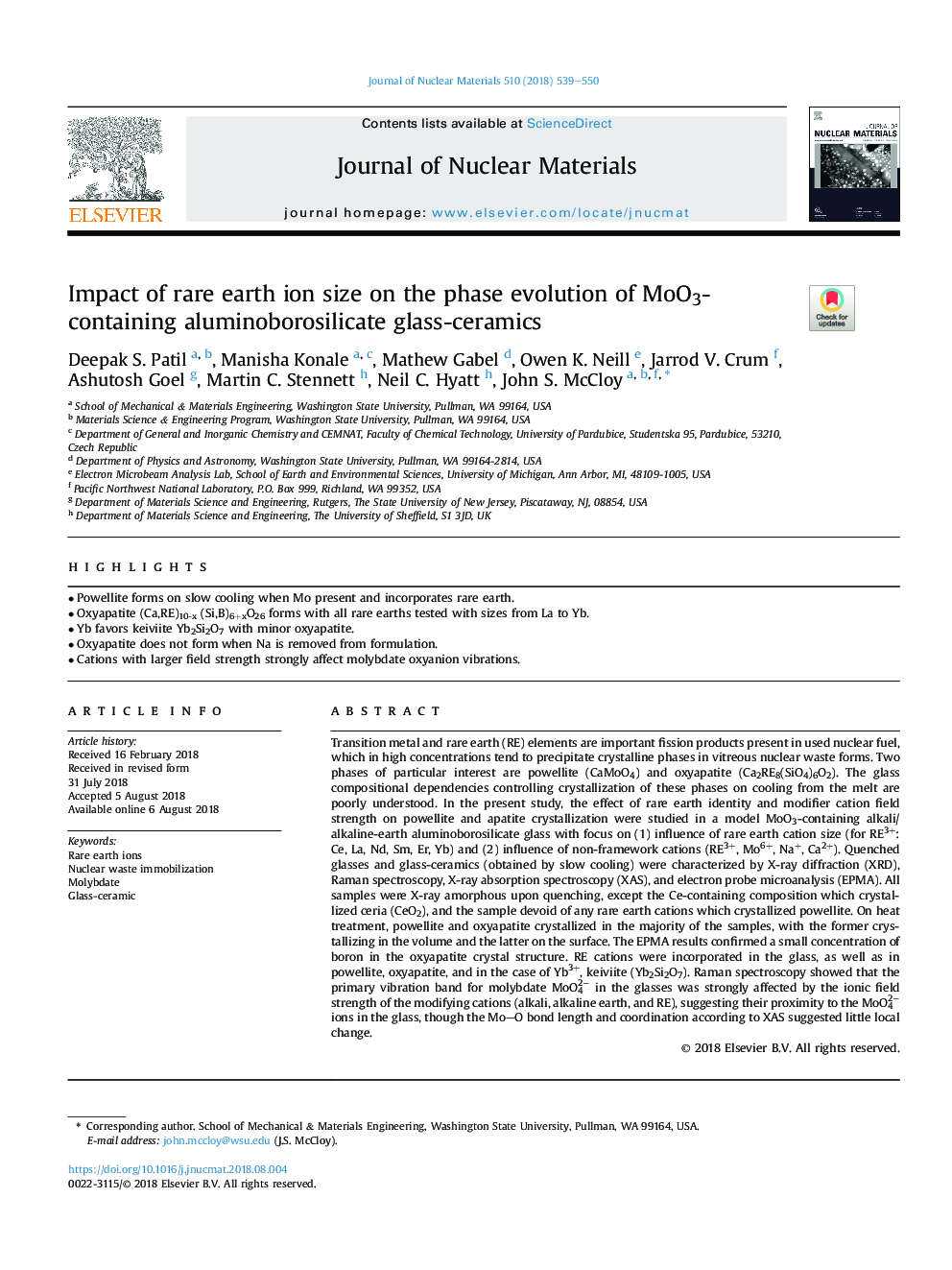| کد مقاله | کد نشریه | سال انتشار | مقاله انگلیسی | نسخه تمام متن |
|---|---|---|---|---|
| 11006983 | 1514136 | 2018 | 12 صفحه PDF | دانلود رایگان |
عنوان انگلیسی مقاله ISI
Impact of rare earth ion size on the phase evolution of MoO3-containing aluminoborosilicate glass-ceramics
ترجمه فارسی عنوان
تاثیر اندازه یون های خاکی نادر بر تکامل فاز شیشه ای سرامیک آلومینیوم بورورسیلیکات
دانلود مقاله + سفارش ترجمه
دانلود مقاله ISI انگلیسی
رایگان برای ایرانیان
کلمات کلیدی
یون های نادر زمین، بی حرکت سازی اتلاف هسته، مولیبدن، سرامیک شیشه ای،
موضوعات مرتبط
مهندسی و علوم پایه
مهندسی انرژی
انرژی هسته ای و مهندسی
چکیده انگلیسی
Transition metal and rare earth (RE) elements are important fission products present in used nuclear fuel, which in high concentrations tend to precipitate crystalline phases in vitreous nuclear waste forms. Two phases of particular interest are powellite (CaMoO4) and oxyapatite (Ca2RE8(SiO4)6O2). The glass compositional dependencies controlling crystallization of these phases on cooling from the melt are poorly understood. In the present study, the effect of rare earth identity and modifier cation field strength on powellite and apatite crystallization were studied in a model MoO3-containing alkali/alkaline-earth aluminoborosilicate glass with focus on (1) influence of rare earth cation size (for RE3+: Ce, La, Nd, Sm, Er, Yb) and (2) influence of non-framework cations (RE3+, Mo6+, Na+, Ca2+). Quenched glasses and glass-ceramics (obtained by slow cooling) were characterized by X-ray diffraction (XRD), Raman spectroscopy, X-ray absorption spectroscopy (XAS), and electron probe microanalysis (EPMA). All samples were X-ray amorphous upon quenching, except the Ce-containing composition which crystallized ceria (CeO2), and the sample devoid of any rare earth cations which crystallized powellite. On heat treatment, powellite and oxyapatite crystallized in the majority of the samples, with the former crystallizing in the volume and the latter on the surface. The EPMA results confirmed a small concentration of boron in the oxyapatite crystal structure. RE cations were incorporated in the glass, as well as in powellite, oxyapatite, and in the case of Yb3+, keiviite (Yb2Si2O7). Raman spectroscopy showed that the primary vibration band for molybdate MoO42â in the glasses was strongly affected by the ionic field strength of the modifying cations (alkali, alkaline earth, and RE), suggesting their proximity to the MoO42â ions in the glass, though the MoO bond length and coordination according to XAS suggested little local change.
ناشر
Database: Elsevier - ScienceDirect (ساینس دایرکت)
Journal: Journal of Nuclear Materials - Volume 510, November 2018, Pages 539-550
Journal: Journal of Nuclear Materials - Volume 510, November 2018, Pages 539-550
نویسندگان
Deepak S. Patil, Manisha Konale, Mathew Gabel, Owen K. Neill, Jarrod V. Crum, Ashutosh Goel, Martin C. Stennett, Neil C. Hyatt, John S. McCloy,
